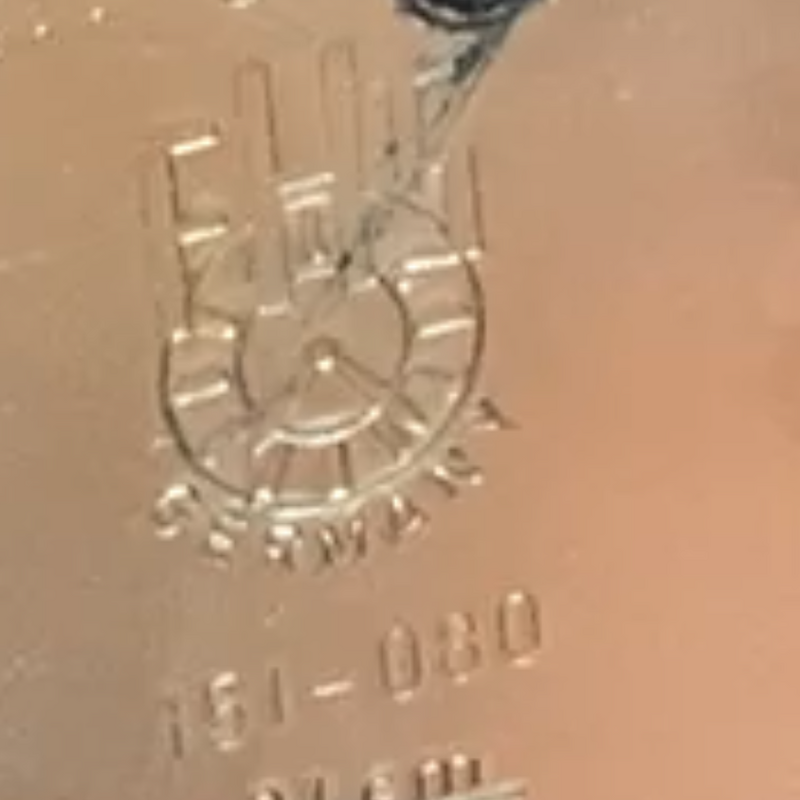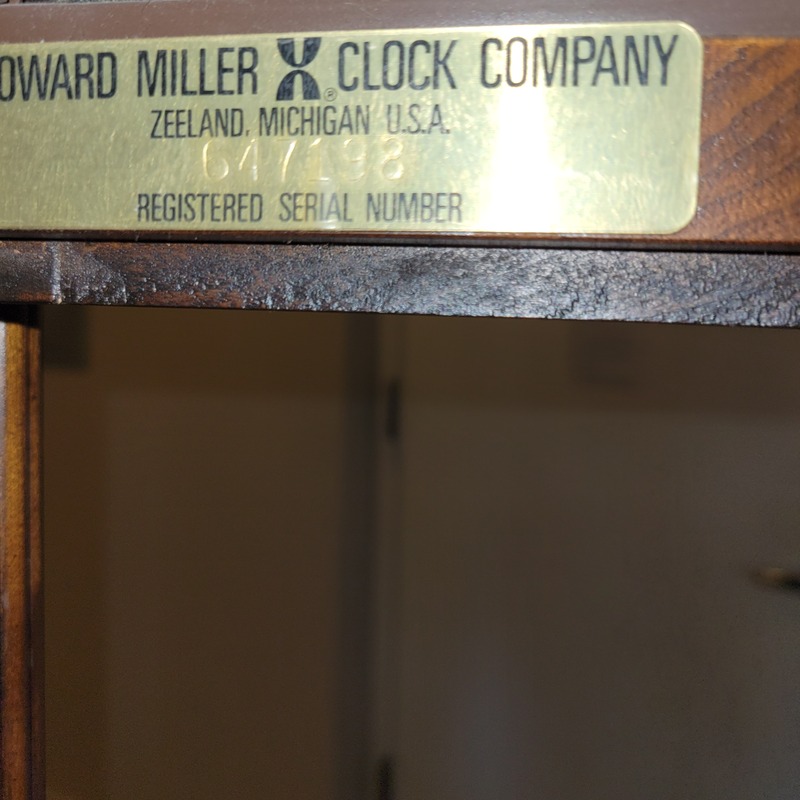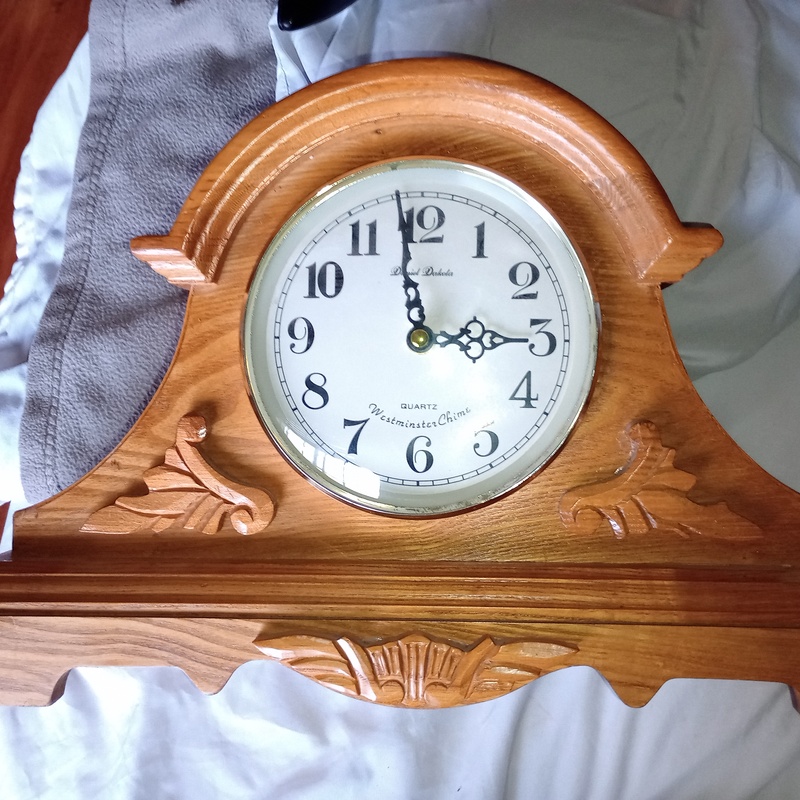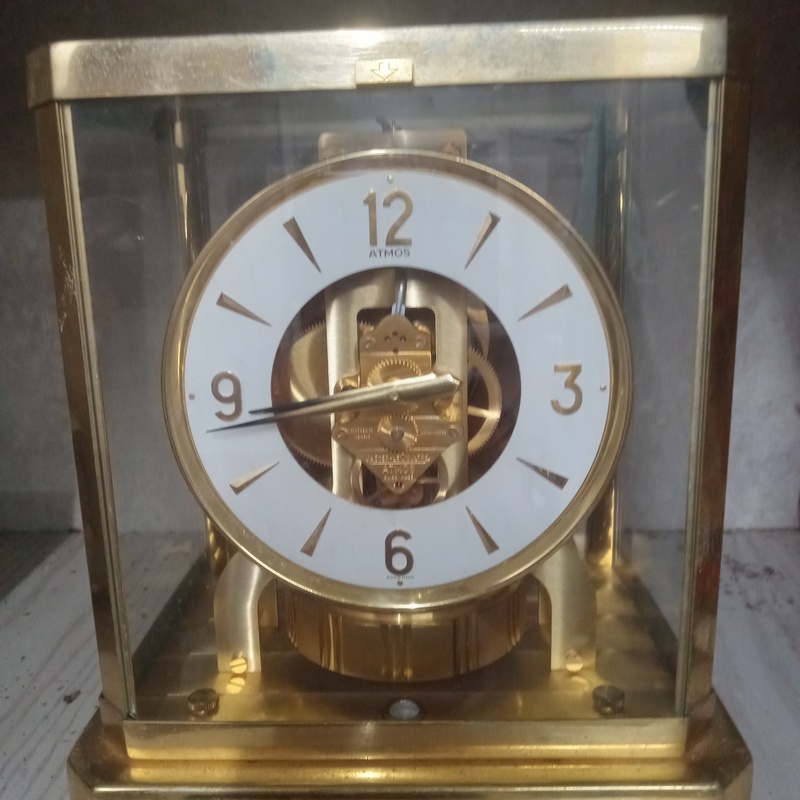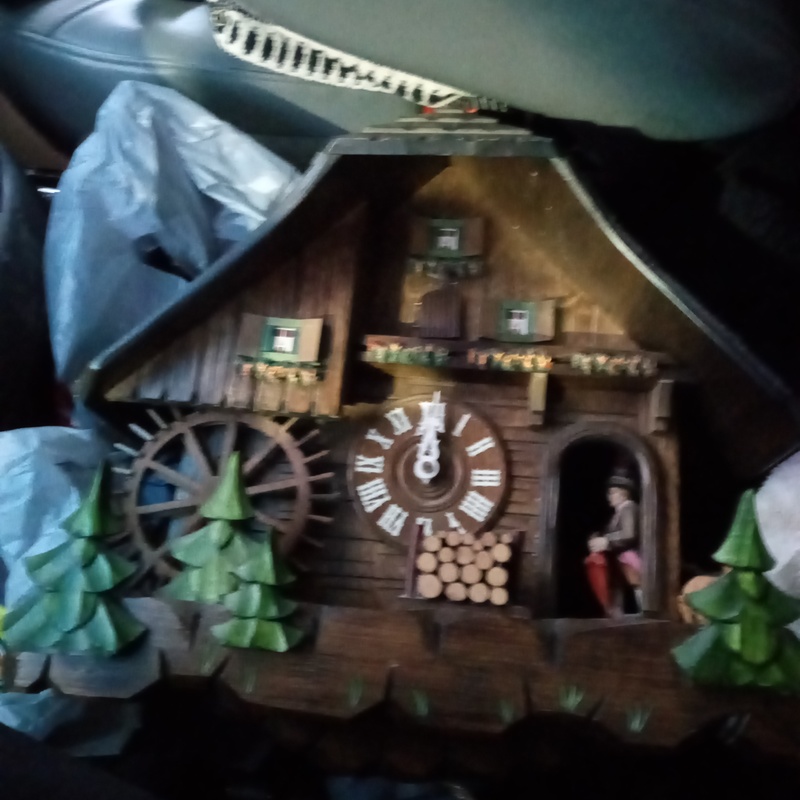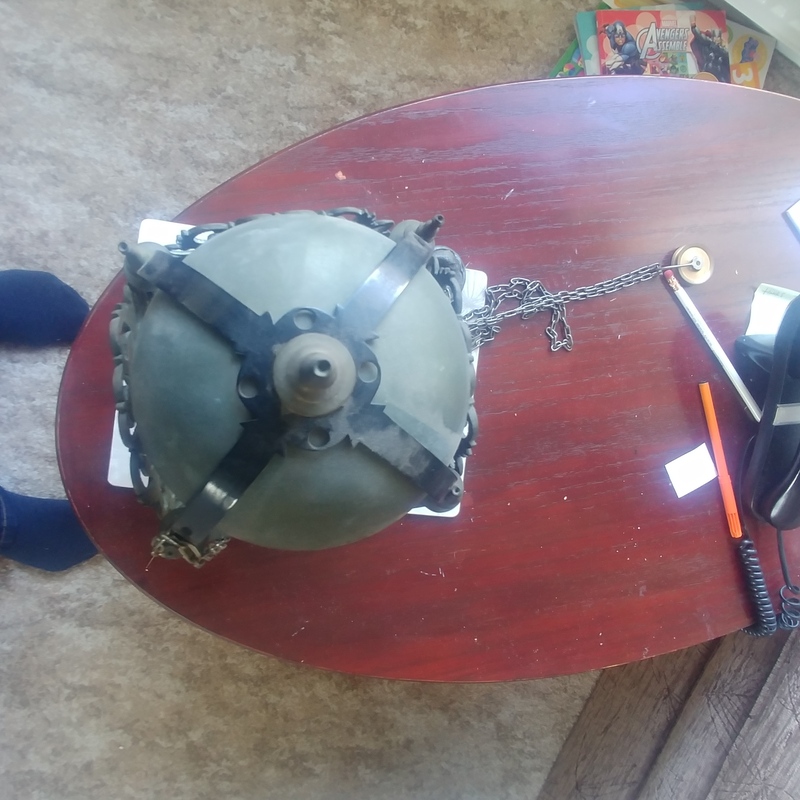
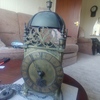
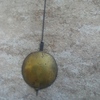
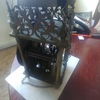

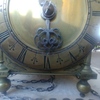
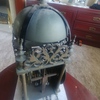

Lantern clock
16 inch high 5 and 3/4 x 5and 3/4 wide Brass with steel strap by bell
Grandparents attic.they lived in northern England.they say it been there for at least 100 years
Inherited
Maybe


Hello Paul,
Thank you for sending in your lantern clock to mearto.com for an appraisal. I shall try to help you with that today. . .
TITLE:
Brass and iron, single weight driven, 30 hour time and hourly striking lantern clock (birdcage clock), case frame marked, “T.T. (Suggesting Thomas Tompion), London, Fecit, 1693”, dial is unsigned, likely a restored replication made from old and new parts and mostly dating from the late 19th century -20th century.
DESCRIPTION:
CASE – 16” x 5.75” x 5.75” brass case in the lantern clock design (a clock style made in England from 1600 into the early 18th century). The case is surmounted by a large cast iron bell with a turned brass ringed finial at the apex from which four steel straps pass over the bell and attach at the four corners of the case. In front of each attachment resides a similar cast brass finial. At the front and both sides, between these corner finials resides the open brass fretwork. In this case there is an inverted Fleur-de Lys design at the upper center which then flows into multiple curled brass foliate forms with some linear engraving on the front sides. The three pieces of fretwork on the crest of this case are identical in design. (This is a known fret pattern and can be seen in Figure 25, No. 6 on page 54 of Cecinsky & Webster text, “English Domestic Clocks”. (The major difference is that the original frets were made of somewhat thinner brass than is used in this clock. These frets are made of heavy and broad solid pieces of brass. In addition most of the 17th century lantern clock frets were not engraved on the side fretwork as they were on the façade.) The case is supported by four brass pillars, each with a square brass block at the top and bottom connecting to the iron plates at the top and bottom of the case. All rest on brass ball shaped trumpet feet. (It is the square narrow brass pillar blocks that carry the designation “T.T., London, Fecit, 1693” on the facade. This was usually not where such 17th century lantern clocks were signed.) There are no side doors on this clock, and I would expect to see them if the clock were truly 17th century. . . .
DIAL – Round solid brass dial with a diameter greater than that of the case. There is an applied Roman hour brass chapter ring with quarter hour ring to the inside and no minute ring on the outside. The dial center is brass and without ornamentation. There are wing like engraved spandrels in the four corners of the façade. The dial has two hands (almost exclusively 17th century lantern clocks had one hand and when they were made with two it was a rarity.) These are not lantern clock hands but those related to clocks made in England during the first half of the 18th century. The dial is unsigned. . .
MOVEMENT: ‘Pillar and post’ birdcage type movement with contrate wheel evident, indicating that this clock at one time had either the earlier balance wheel escapement (first half of the 17th century) above the top plate (no longer present) or the verge escapement used primarily in the third quarter of the 17th century with a short ‘bob’ pendulum swinging inside the casing at the back of the movement. Here we are shown the presence of a long pendulum which would indicate the movement has been made or restored to have an anchor escapement. The movement is powered by a single-weight drive using a continuous (figure-eight) chain, known as the 'Huygens' winding system. There is a lead donut, the type seen in cottage longcase clocks, which serves as a counterbalance. Such systems were installed when the movements were modified to have an anchor escapement. Strike in on the hour using a countwheel system which is noted on the back movement plate. Duration is usually about 30 hours on a single winding in such converted movements. . .
CONDITION - From an aesthetic point of view this is a handsome lantern clock. Most lantern clocks one sees today are altered and restored and some are simply replicas made in the 20th century. The silvered chain is fairly modern and the type of spindle that takes up the chain appears to have been constructed for chain drive and not the early clothes-line rope that was commonly used in the 17th century. Each spindle appears to be hooked whereas early spindles were sharply made to hold rope.
There is less wear to the top and bottom plates and bell than I would expect if this were a 17th century piece, and the presence of the engraving, suggesting Thomas Tompion is a sure sign that this is a bit of fakery by whoever made this clock. The overall effect is that this is a replica made to deceive the buying public and some parts are earlier than others, but most likely made in the late 19th or during the 20th century.
Wrong hands, no decoration in the dial center, strange and unusual for a London made clock, no significant age to the bell or the base platform of the case, new chain and strangely shaped sprockets for a 17th century movement, Overly heavy frets, fully engraved on the façade and both sides suggesting machine work not handcrafting. Signed in the wrong areas, iron straps enclosing the bell have holes at the top for attachments of brass ornaments (empty and appear never to have been used).
Smiths Clock Company in England made a very good reproduction of the lantern clock in the 1940s.
Values today for replications of or markedly altered lantern clocks, especially those that were meant to deceive, will generally range in the lower three figures. Accordingly, I have priced this example from $300-$400.
I am sorry that the clock you showed me, especially coming from your grandparent’s attic, has all of these flaws when compared with the 17th century item it purports to show. But when they told you that the clock resided in northern England for about one hundred years, I certainly think that may be quite accurate in dating this example (for the most part) between 1900 and 1920.
Best regards,
David

